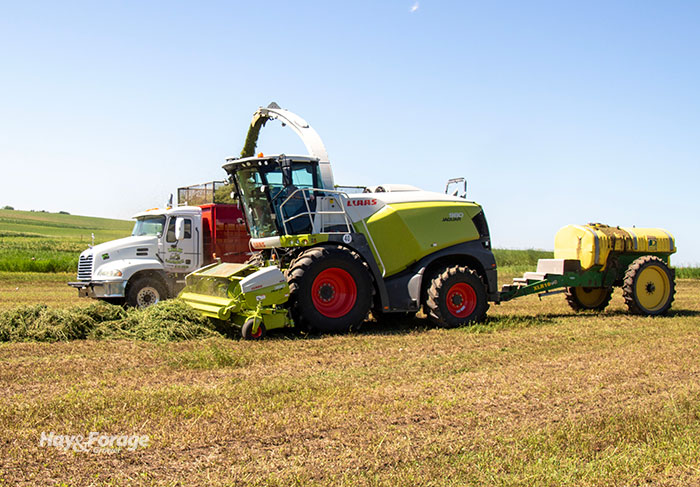
Wiio’s Law states if communication can fail, it will. This might not mean communication is always destined to fail in every sense of the word, but one way or another, what we say is likely not perceived exactly the way we meant for it to be.
Communication on a farm is especially critical to complete tasks safely and effectively. This becomes more complex when help from outside the family or full-time staff join in on seasonal operations like custom harvesting.
Regular and effective communication between producers and custom harvesters will benefit both parties. Therefore, Michelle Chang-Der Bedrosian, a forage products and dairy technical service specialist with Vita Plus, offers the following tips to facilitate constructive conversations this harvest season.
Set the tone. First, ask if your custom harvester prefers receiving texts or phone calls. Odds are that either channel will suffice, but Chang-Der Bedrosian points out some custom harvesters might not be able to hear their phone ring or have time to call back. On the contrary, some people may not check their notifications consistently, so calling them will be more productive.
Define the details. Once the best form of communication is established, talk to your custom harvester about price, payment, responsibilities, and schedules. Create a written contract that clearly states these agreements to ensure both parties are on the same page before harvest season kicks into full gear.
Other details to discuss before first cutting include kernel processing score, length of cut, dry matter targets, use of inoculants, and forage storage specifics. This may seem like information overload, but custom harvesters want to meet their customer’s expectations just as much as producers want quality feed for their livestock.
“These targets must all be discussed before the chopper hits the field,” Chang-Der Bedrosian states. “No adjustments can be made to benefit the current crop if they are discussed post-harvest.”
Send frequent updates. Accelerate communication efforts as first cutting draws near to keep your custom harvester up to date on forage maturity level and dry matter content. Chang-Der Bedrosian notes that being proactive will not only aid operators in planning their harvest schedule, but it will also help producers hold their place in line among other farms. More importantly, it will ensure forage is cut at the optimum time.
“If there is miscommunication about the ideal time to harvest the crop for silage, it could be cut too early or too late,” she writes. “Early cutting means less dry matter, leading to poor fermentation and potential mold growth. Late cutting reduces digestibility for livestock.”
Weather updates are also important to relay. Just because it rained in one part of the county doesn’t mean it rained in another. Therefore, keeping custom harvesters in the loop of past, present, and future conditions that may interfere with forage harvest on your farm will save both sides time, labor, and money.
Talk in the field. “Once the custom harvester is on-site, the need for communication increases,” Chang-Der Bedrosian asserts. “Discuss where the custom harvester should drive, how quickly they should harvest so pack tractors can keep up with incoming silage, and who will do each job.”
Continue to communicate with custom harvesters after each cutting, as well as during the offseason. In addition to assessing the ups and downs of the previous year, Chang-Der Bedrosian encourages producers to express their gratitude and give credit where its due to strengthen relationships moving forward.
“Take time to debrief, celebrate, and appreciate,” she says. “Intentional reflection and planning for the next harvest will lead to future success.”

